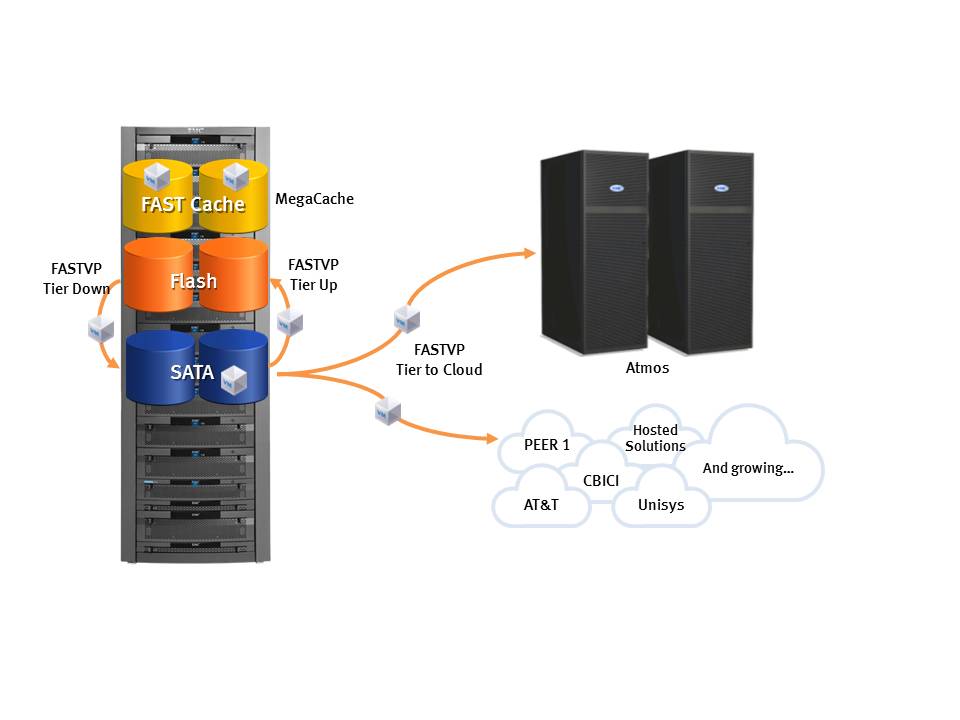As you’ve no doubt heard, EMC has completed the tender offer to acquire Isilon (www.isilon.com) for a Cajillion dollars (actually ~$2 Billion) and some people are asking why. From where I sit, there are many reasons why EMC would want a company like Isilon, ranging from it’s media-minded customer base, to the technical IP, like scale-out NAS, that sets Isilon apart from the rest.
This EMC Press Release, as well as this one, and Chucks Blog are some of the many places to find out more about the acquisition…
I was thinking a lot about that technology as I worked on a high-bandwidth NAS project with a customer recently. Isilon’s primary product is an IP-based storage solution that uses commodity based hardware components, combined with their proprietary OneFS Operating System, to deliver scale-out NAS with super simple management and scalability. A single Isilon OneFS based filesystem can scale to over 10PB across hundreds of nodes. Isilon also provides various versions of hardware that can be intermixed to increase performance, capacity, or both depending on customer needs. You don’t necessarily have to add disks to an Isilon cluster to increase performance.
When looking at EMC’s own product line, you’ll find that Atmos delivers similar scale-out clustering for object-based storage, while VMAX does a similar type of scaling for high-end block storage (FC, FCoE, and iSCSI), and Greenplum provides scale-out analytics as well. Line up Isilon’s OneFS, EMC GreenPlum, EMC Atmos, and EMC VMAX, and we can now deliver massive scale-out storage for database, object, file, and block data. With VPLEX and Atmos, EMC also delivers block and object storage federation across distance.
Isilon’s OneFS also has technologies that mirror EMC’s but are implemented in such a way as to leverage the Scale-Out NAS model. Take FlexProtect, for example, which is Isilon’s data protection mechanism (similar to RAID) and allows admins to apply different protection schemes (N+1 ala RAID5, N+2 ala RAID6, N+3, and even N+4 redundancy) on individual files and directories. SmartPools, which is policy based, automatically tiers data at a file level based on read/write activity across different protection types and physical nodes, similar to how FASTVP tiers data at a block level on EMC Unified and VMAX. Both EMC and Isilon realize that all data is not equal.
Rather than just repackage OneFS with an EMC logo (which I’m sure we’ll do at first), I wonder what else can we do with Isilon’s IP…
A recent series of blog posts by Steve Todd (Information Playground) on the topic of a Common Software Execution Environment (See CSX Technology and The Benefits of Component Assembly) got me thinking about deeper integration and how CSX can accelerate that integration.
For example…
What if EMC Engineering took the portions of code from Isilon’s OneFS that handle client load-balancing, file-level automated tiering, and flexible protection and turned them into CSX components. Those components could be dropped into Celerra and immediately add Scale-Out NAS to EMC’s existing Unified storage platforms. Or, imagine those components running directly in VMAX engines, providing scale-out NAS simultaneously with scale-out SAN across multiple, massive scale storage systems. Combine the load balancing code and FlexProtect from Isilon with FASTVP in EMC Clariion to provide scale-out SAN in a midrange platform.
We could also reverse the situation and use the compression component that is in Clariion and Celerra, plus federation technology in Atmos, both added to OneFS in order reduce the storage footprint and extend Scale-Out NAS to many sites over any distance. Add a GreenPlum component and suddenly you have a massive analytics cluster that spans multiple sites for data where you need it, when you need it.
The possibilities here really are endless, it will be very interesting to see what happens over the next 12 to 24 months.
Disclaimer: Even though I am an EMC employee, I am in no way involved in the EMC/Isilon acquisition, have no knowledge of future plans and roadmaps with regard to EMC and Isilon, and am not privy to any non-public information about this topic. I am merely expressing my own personal views on this topic.
Like this:
Like Loading...


